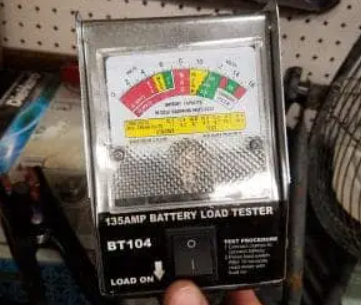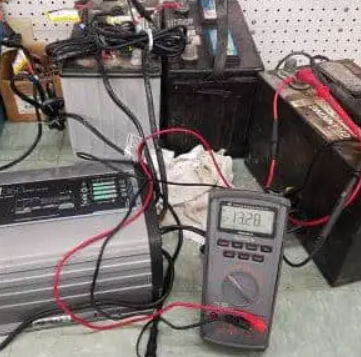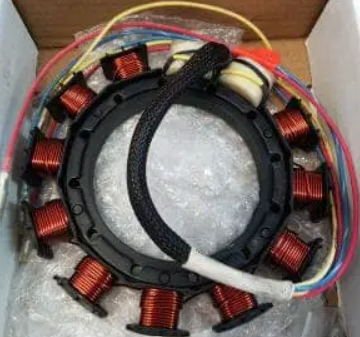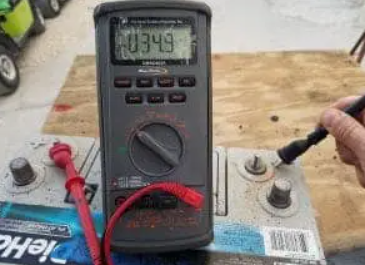Why Do My Batteries Keep Dying?
How many times have you stepped on your boat just to find out that the battery is dead? Or after only two or three trips out in the boat, you are left with a dead battery?
Why Does My Boat Battery Keep Dying?
Boat batteries continually die because of three main reasons:
1.) Age and lack of water.
2.) A charging issue with the engine.
3.) A parasitic draw on the battery that is draining it all of the time, even when the batteries are off.
This article will cover all three of these issues in-depth and will even help you to go about figuring out which one applies to you and how to fix it!

What’s Draining My Boat Battery?
When it comes to having a continuously dying boat battery, we first need to figure out what exactly is draining the battery.
There are many reasons for a battery to drain. From an old battery that is discharging itself. To a battery that doesn’t have enough water.
Age and maintenance become more important to think about. Batteries can also drain if they are not being charged back up by that battery.
A failed charging system from the engine will do this. There are a couple of parts to the charging system and we will cover them in a little bit.
Outside of that, there is also what is called a parasitic draw that can be draining the battery. This is a constant consumption of power from something inside of the boat.
That is using up the battery voltage, even when everything is turned off in the boat.
These types of drains can have you pulling your hair out trying to figure out what the issue is! Luckily, we’ll cover that before the end of this article!
Age & Battery Maintenance
Sometimes batteries don’t just die, they will hold a charge for a little while. Then only let out a couple of hours of use or a few starts of the engine. Before they are dead again!
This is usually because of one or two reasons. Either the battery is low on water, meaning that it is not a maintenance-free battery and it requires water to be added periodically to the cells of the battery. While other batteries do not need this type of care. Some do.
Then there is also just the age factor. Older batteries will wear out and this will be the issue. Sometimes they will just die completely, leaving you without the question of whether it is the battery or not.
At other times, you will need to utilize what is called a battery load tester to test the battery’s capabilities.
These load testers will put a huge draw on the battery and will show you whether the battery is good or not. And can handle the massive load of amp draw. Like what happens when you start your engine!
Boat Battery Died While Running or on the Water!
There are other instances where a battery will die while you are running! If you are on the water and your boat battery just dies. There is a reason for this!
This is because the engine’s charging system is not operating properly, or you have not run the engine in so long that the electronics on the boat.
Have you drained the battery down to nothing and now it’s dead. Both of these scenarios happen a little more often than you would think.
You can switch your battery switch over to the combined or both positions. And this will connect your boat’s batteries, (if you have more than one battery onboard.)
Giving you the ability to at least get back to the dock for this trip.
The reason that the engine can drain the battery is that the engine uses electricity to operate the ignition system when the engine is running.
If there is an issue with the charging system, then the engine will use up the battery to run.
Once the battery is drained, the engine will shut off and won’t run! Now we have to figure out what’s going on.

Boat Alternator Draining Battery & Troubleshooting a Charging System
If this is the case and the engine’s stator or alternator is not charging but allowing the engine to drain the battery, here’s how to test it.
There are many different components that make up a charging system. Depending on what brand engine you have, there is going to be an alternator or stator, a rectifier regulator, a fuse, and the cables that carry the electricity.
On most engines that use an alternator instead of a stator. These systems have the rectifier regulator built into the alternator. What this rectifier regulator does is it changes the electricity from AC to DC.
That is, it rectifies the alternating electrical current and changes it to direct electrical current. Then, it regulates this current and only allows it to produce a specific amount at a time.
Most charging systems regulate that the voltage doesn’t go about 14.7 VDC or volts direct current.
That is because once you get to 15 VDC and above, this can begin to damage other electrical components in your system.
Then we have the stator style. Which has a stator that goes underneath the engine flywheel. And then sends the AC voltage to the rectifier regulator which is a separate part.
Once it goes through the rectifier regulator, it gets sent to the ignition coils and back to the boat’s battery to charge up the system.
Troubleshooting these systems are not too complicated.
The quickest way to test any boat charging system is to look at the voltage gauge on the dash. If it doesn’t say 13 VDC or more with the engine running over 1,000 RPMs.
The engine is not charging!
We can also take what is called a digital voltage meter in order to check this, touching the meter directly to the battery with the engine running. The voltage should be climbing, showing us that the engine is charging. If it doesn’t we can test the alternator by checking what is called the exciter wire. This is a wire that plugs into the alternator and has two wires going to it.
With the key switch in the on position we can check these two wires with the meter. Having the meter set to Volts DC we can put the ground or negative meter lead to any ground on the engine block.
Then we’ll take the red or positive meter lead and check for battery voltage ON BOTH OF THESE WIRES.
We should see both wires have battery voltage present on them. As long as there is battery voltage there, we can start and run the engine.
With the engine running, we will touch our positive meter lead to the output side of the alternator. Here we are looking for 14-25 VDC.
The reason we can see up to 25 VDC is that if the fuse coming after the alternator is blown, it will be sending as much juice as it can to the battery.
Otherwise, look for about 14.3-14.7 VDC to be coming out of the alternator.

Testing an Outboard Stator
This test requires a little more in-depth testing. Different manufacturers are going to have different tests, for different style stators.
But the most common test that can be performed, is to ohm out the stator and check it for a short to ground. This is done by simply taking your ground lead on your meter and hooking it up to the engine ground.
Setting the meter to ohms and then checking each of the wires that are coming out of the stator. You should not see any of these wires having ANY continuity to ground.
If they do, then the stator is shorted out and will need to be replaced.
Outside of that, you will need a Digital Voltage Adapter to read the voltage output of the stator. And we recommend that you follow your engine service manual procedures to check this.
We can check for the output voltage coming out of the rectifier regulator as well to see if it is not putting out any voltage. If it is not, and via the service manual you have confirmed that the stator is in good condition.
Then you can check in the service manual and follow the testing procedures to test the diodes inside of the rectifier regulator.
Before replacing it and fixing this charging issue!
How To Charge a Boat Battery on the Water!
Charging a boat battery in the water can be done. But by really only three main ways. That is to use your engine to charge the battery.
Having your battery switch on the combined or both batteries will help to charge the battery. Letting the engine run at a higher idle will produce the most amount of voltage to bring the batteries up. Then there is the use of solar panels. Solar panels are a way that you will find many sailboaters maintaining their batteries.
These panels are a great way to charge your batteries. But you need to have these already hooked up and installed to do this.
The last way is to be hooked up to a dock! Then running an extension cord and plugging in your onboard charger. Or having a regular battery charger hooked up to your batteries to bring them up.

Troubleshoot Boat Battery Drain!
One last thing that we need to talk about to fix your boat batteries dying issue is to find out where that parasitic draw is coming from and stop it!
We can do this by doing some disconnecting. This is a test that needs to be done properly because if you don’t do it properly, you can mess up your meter.
We’ll turn everything off in the boat including the battery switch and key switch. Unhook the negative cable from the battery and put your meter to amps.
Then hook up the positive cable to the ground cable. And the negative lead to the battery ground post. You should then see some amp draw on your meter.
Now locate your fuse panel or breaker panel that is in the boat. While watching the meter, we will go through all of these fuses or breakers.
Pulling out the fuse one at a time or tripping the breaker one at a time. Once the fuse is pulled, we will look back at the meter and see what the reading is.
If the amp draw is still present on the meter then we can put the fuse back in and move on to the next.
Continue pulling fuses and looking at the meter until you see the amp draw go away! Once you see that go away. Whatever fuse you pulled, we will now go through that circuit.
We can troubleshoot that component or circuit and figure out what has failed that is allowing the component to cause a constant drain on the battery. Making your boat’s battery keep dying!